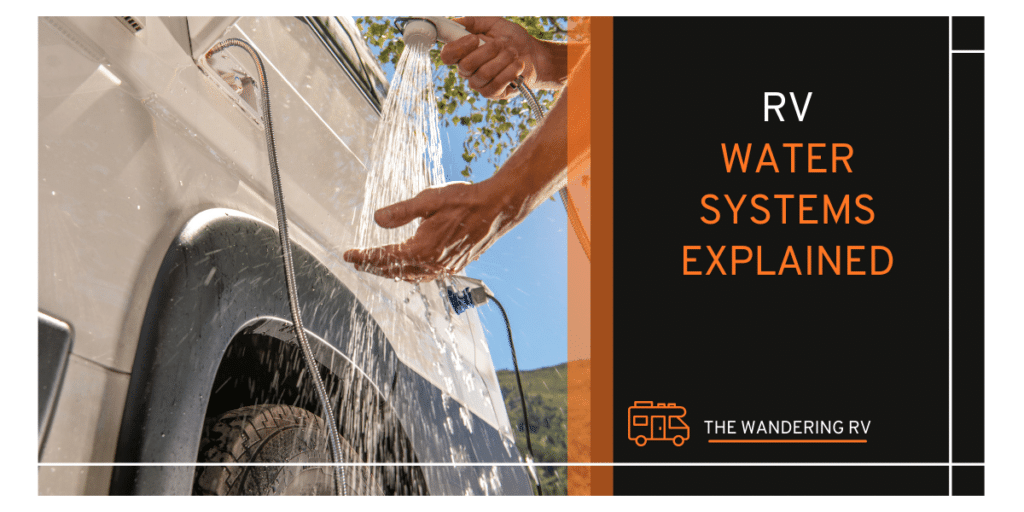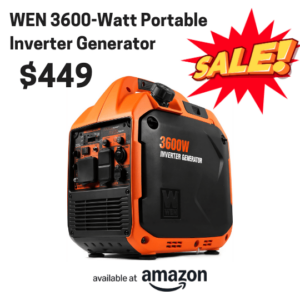
All aboard the H2O express, fellow RV enthusiasts, as we embark on a journey into the fascinating world of RV water systems! These intricate networks of pipes, tanks, and pumps may seem like an enigma wrapped in a riddle, but fear not, for we’re here to unravel the mysteries and quench your thirst for knowledge. So, grab your wrenches and put on your thinking caps, as we dive deep into the inner workings of RV water systems, providing you with the know-how to keep your rig’s liquid lifeblood flowing smoothly. Ready to make a splash? Let’s get this water party started!
Grasping the ins and outs of your RV’s water system is essential for ensuring a comfortable and hassle-free experience on the road. Proper understanding and maintenance of the system not only safeguard your access to clean and safe water but also prevent potential issues, keeping your adventures flowing smoothly.
Table of contents
Overview of RV Water Systems
The three main components of an RV water system are the fresh, gray, and black water systems. These components work in tandem to manage the water supply, usage, and waste disposal within your RV, ensuring a comfortable and sanitary living environment.
The fresh water system stores and supplies potable water for drinking, cooking, and washing. The gray water system collects and stores used water from sinks and showers, while the black water system handles waste from the toilet. Each component plays a vital role in maintaining the overall functionality and hygiene of your RV’s water system.
RV Fresh Water Systems
The fresh water system comprises a fresh water tank, a water pump, and water lines. The fresh water tank stores potable water, the water pump ensures consistent pressure and flow throughout the system, and the water lines deliver water from the tank to the RV’s fixtures.
Water is supplied to the RV’s fixtures, such as the sink, shower, and toilet, through the water lines connected to the fresh water tank. The water pump plays a crucial role in maintaining adequate water pressure, ensuring a smooth and steady flow to each fixture when needed. Another way to supply water and pressure is by hooking up to a constant water source. This bypasses the water tank and uses “city water” to supply water and pressure.
To maintain and clean the fresh water system, it’s essential to sanitize the water tank periodically, check for leaks and fix them promptly, and replace or clean the water pump filter as needed. Regular maintenance helps prevent contamination, ensures proper water pressure, and prolongs the life of your RV’s water system components.
RV Gray Water Systems
The gray water tank serves as a storage container for used water from sinks and showers in your RV. Its primary purpose is to collect gray water – wastewater that does not contain human waste, separate from the black water tank, which handles toilet waste.
Proper gray water disposal and management involve emptying the tank at designated dump stations or using a portable waste tank. It’s crucial to follow local regulations and campground rules when disposing of gray water to ensure environmental responsibility and maintain a hygienic RV experience.
Maintenance tips for the gray water system include routinely inspecting and cleaning the tank, checking for leaks in the water lines and connections, and using environmentally friendly soaps and detergents to minimize potential harm to the environment. Regular maintenance helps prevent unpleasant odors, clogs, and damage to the gray water system components.
RV Black Water Systems
The black water tank is a crucial component of the RV water system, designed to store human waste and toilet paper from the RV’s toilet. Its primary purpose is to keep waste contained and separate from other water sources, ensuring a sanitary living environment within your RV.
The toilet in your RV flushes waste directly into the black water tank. Proper waste disposal involves emptying the tank at designated dump stations and using a sewer hose to connect the tank to the station. To aid in breaking down waste and controlling odors, it’s important to use black water tank chemicals specifically formulated for RV use.
To maintain and clean the black water system, regularly empty and flush the tank, inspect the system for leaks and damage, and use the appropriate chemicals for waste breakdown and odor control. Additionally, utilize RV-specific toilet paper to prevent clogs. Consistent maintenance helps prevent unpleasant smells, blockages, and potential damage to the black water system components.
RV Water Heaters
RV water heaters come in various types, with the most common being tank-based and tankless heaters. Tank-based water heaters store and heat a specific volume of water, while tankless water heaters heat the water on demand, as it flows through the unit, providing an endless supply of hot water.
Tank-based water heaters have a limited capacity and can run out of hot water, requiring a waiting period for reheating. They are typically less energy-efficient but have a lower upfront cost. Tankless water heaters, on the other hand, provide continuous hot water and are more energy-efficient, but they generally come with a higher initial cost and may require more maintenance.
To maintain your RV water heater, regularly inspect the unit for leaks or damage, flush the system to remove sediment and mineral buildup, and check the anode rod in tank-based heaters for corrosion. For tankless heaters, clean the inlet filter screen and descale the heat exchanger as needed. Proper maintenance prolongs the life of your water heater and ensures a reliable supply of hot water during your RV adventures.
Winterizing Your RV Water System
Winterizing your RV water system is crucial to prevent damage caused by freezing temperatures, which can lead to burst pipes, cracked tanks, and other costly issues. Taking the necessary precautions before storing your RV during winter or traveling in cold conditions helps ensure the longevity and proper function of your water system components.
To winterize the fresh, gray, and black water systems, start by draining all tanks and water lines, ensuring they are completely empty. Then, use an RV antifreeze to fill the plumbing system, following the manufacturer’s instructions. Don’t forget to bypass the water heater and run the antifreeze through all faucets, showerheads, and the toilet to protect the entire system.
Preventing frozen pipes and other cold-weather issues involves insulating exposed water lines, using heat tape on critical areas, and keeping the interior of the RV warm by utilizing the furnace or space heaters. Additionally, regularly inspect your water system components for signs of freezing or damage during cold spells to address any issues promptly.
Troubleshooting Common RV Water System Issues
Common RV water system issues include leaks in pipes or tanks, low water pressure, water pump malfunctions, and clogged drains. These problems can lead to water damage, reduced functionality, and an unpleasant RV experience if not promptly addressed.
To resolve these issues, start by inspecting your water system for visible damage, tightening connections, and replacing damaged components as needed. For low water pressure, check the water pump and clean or replace its filter, and ensure the faucets and showerheads are free of mineral buildup. If you encounter clogged drains, use a plunger or a plumbing snake to clear the blockage, and always use RV-specific toilet paper to prevent future clogs. Regular maintenance and prompt attention to any issues will help keep your RV’s water system in top shape.
Conclusion
And so, our enlightening escapade through the world of RV water systems comes to an end. With newfound knowledge of the fresh, gray, and black water systems, along with the intricacies of water heaters and winterization, you’re now equipped to tackle any H2O challenge your RV may face. So, hit the road with confidence, knowing your trusty home-on-wheels is in tip-top shape, and let your RV water system flow seamlessly as you embark on your next adventure. Stay hydrated, happy campers, and may your travels be filled with leak-free memories!




